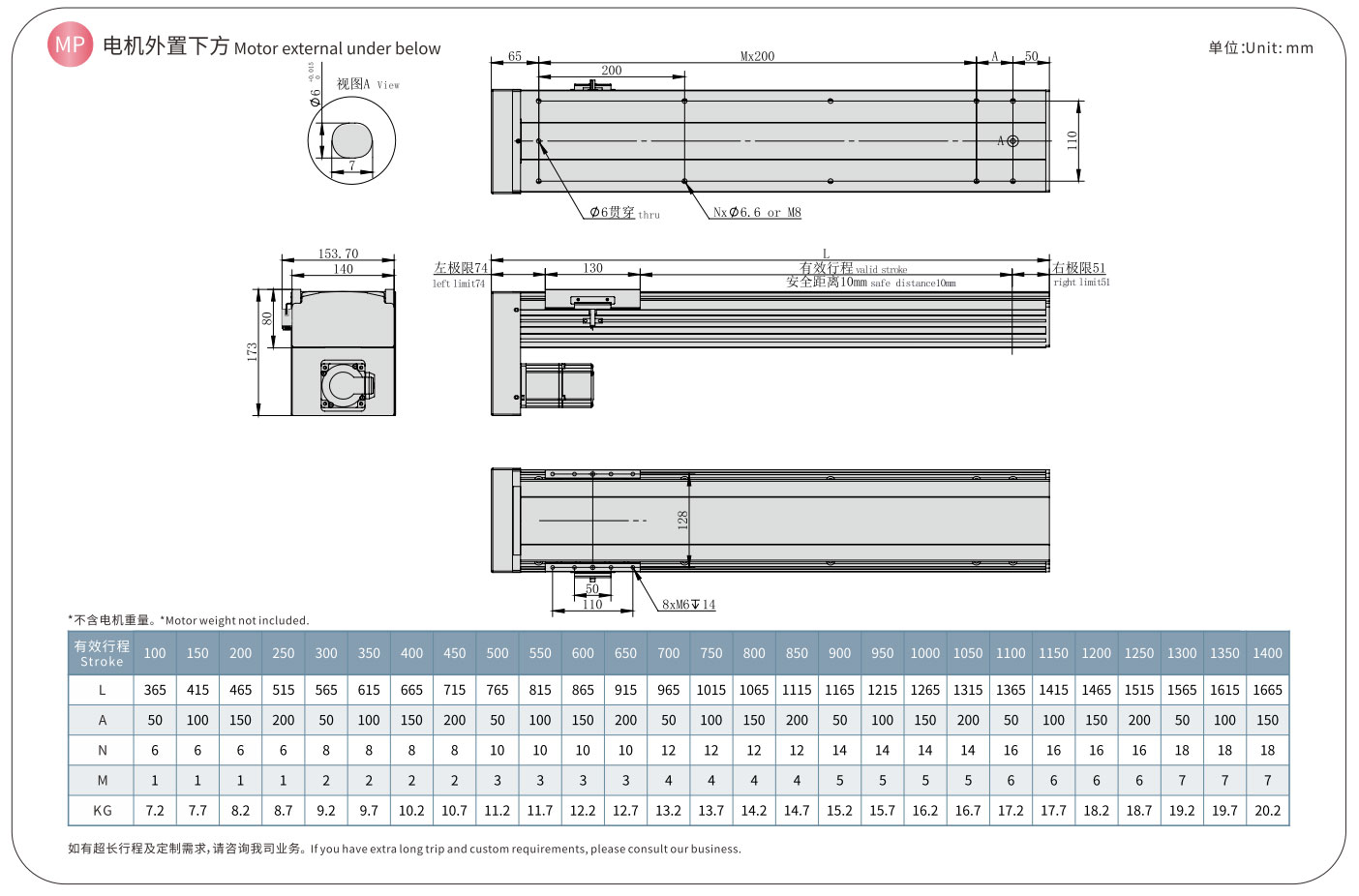When I first started working in technical sales for igus® back in the year 2000, we had three series of linear slides: drylin R, drylin T, and drylin N. drylin R and T were dimensionally similar to the round-shaft and profile guides that already existed within the industrial marketplace at the time—of course, our parts were made of dry-running plastic bearings and components—and drylin N was a more compact flat-rail.
Around 2003, we introduced what now many consider to be our flagship linear bearing product, the drylin W series, which expands upon the many benefits from the three series mentioned above by amalgamating them into one flagship series. It was after the introduction of the drylin® W that we began adding a new line of products—fully assembled linear actuators. High Precision Linear Actuator

What exactly is a linear actuator?
Starting in the early 2000s, many linear bearing manufacturers began to notice an upward trend in regard to customers wanting what sounded like a ‘plug and play’ type linear bearing solution—a linear actuator. A linear actuator uses a rotary motor, such as a stepper, servo, brushless DC/DC, or similar motor, to convert the rotary motion produced by the motor into a linear motion that can travel on a set of linear bearings. Usually, this rotary motion is converted by using a lead screw, a timing belt, or a rack and pinion system; however, actuators can be comprised of many different components depending on what you are looking for. At the bare minimum, the drive method (aka timing belt or lead screw) would be incorporated into the linear bearing system as a one-piece, bolt-on solution. Most manufacturers also offer additional options, such as motor mounts and flanges, couplings, and motors. Other accessories, like motor and data cable assemblies, proximity sensors and cables, as well as motor drivers, might also be offered. To make things even more complicated, many manufacturers also offer fully assembled gantry robots, or linear robots, which usually combine two or three axes together to cover 3 degrees of motion.
igus ZLW belt-drive with motor coupled to the drive shaft
igus SAW with motor coupled to the lead screw
Why use an assembled linear actuator when you could cobble one together yourself?
So, there you have it—a brief explanation of what linear actuators actually are and why they are becoming more commonplace within the realm of machine design. So many applications require linear motion functionality, and we are seeing more and more each day.
If you are interested in getting an idea of how linear actuators work in regard to an application, igus® offers several tools that can help check the functionality of our drylin linear actuators, including some nice motor options—also, had to drop a shameless igus® plug. Additionally, we offer another configurator that focuses on our popular HTS Lead Screw-Driven Actuators with Shafts, which allows you to customize your components, add motors and manual accessories, as well as make custom modifications to the lead screw output. After you have configured your linear actuator according to your exact specifications, you can get a 3D step file, a 2D drawing, an exact price, and then order directly online!
If you are interested in speaking further with an expert about the linear motion requirements of your application, please do not hesitate to contact our drylin Product Manager. You can also check out this video to learn when you should use a linear plain bearing vs. a recirculating ball bearing.
Browse the most current issue of Design World and back issues in an easy to use high quality format. Clip, share and download with the leading design engineering magazine today.
Top global problem solving EE forum covering Microcontrollers, DSP, Networking, Analog and Digital Design, RF, Power Electronics, PCB Routing and much more
The Engineering Exchange is a global educational networking community for engineers. Connect, share, and learn today »

Linear Actuator System Copyright © 2024 WTWH Media LLC. All Rights Reserved. The material on this site may not be reproduced, distributed, transmitted, cached or otherwise used, except with the prior written permission of WTWH Media Privacy Policy | Advertising | About Us